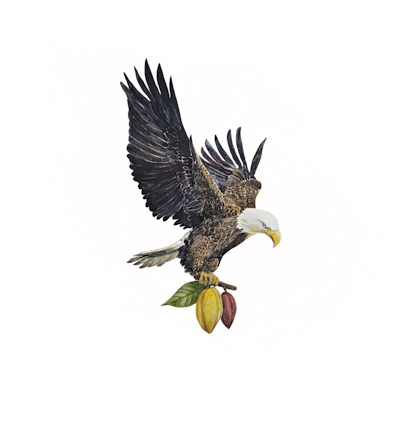
Beyond the Smoke: Mullein’s Journey from Folklore to Modern Herbalism.
Today, let’s dive into the velvety world of Mullein, that revered herb steeped in ancient folklore and magical properties. With its velvety leaves and vibrant yellow flowers, Mullein has captivated hearts and minds for centuries, leaving an indelible mark on the tapestry of human history.
Mullein, known by many names such as “Hag’s Taper”, “Plant of the Lord”, “Adam’s Flannel,” “Blanket,” “Shepherd’s Club,” “Aaron’s Rod,” “Cuddie’s Lungs”; and “Velvet Plant,” has graced the pages of herbal history with its versatile medicinal uses. From soothing coughs and congestion to calming the lungs during respiratory distress, this gentle herb has been a trusted ally in healing.

Photo by Daniel Cooke on Unsplash
But oh, there is so much more to Mullein than meets the eye. Beneath its tender exterior lies a world of magick waiting to be explored, it stands as a bridge between our earthly existence and the ethereal realms. Like a gentle guardian, it watches over our well-being, inviting us to embrace the profound mysteries of both body and spirit. This sacred herb has been celebrated for ages, revered by herbalists and witches alike for its multifaceted properties.

Photo by Hannah Grapp
In folklore, Mullein is associated with spiritual cleansing, purifying energies, and protection against malevolent forces. Its leaves and dried flowers can be used in rituals to ward off negativity, allowing us to traverse the spiritual realm with courage and clarity.
As a healer’s ally, Mullein offers a myriad of physical benefits. Its leaves and flowers possess expectorant properties, soothing coughs and congestion while loosening phlegm. Additionally, Mullein tea, when combined with milk, proves effective in treating diarrhoea, and a sweetened infusion of its flowers can ease colic. This versatile herb is also known to relieve chronic cough and asthma when smoked, providing gentle respiratory support.
Flowers of Mullein in olive oil, when kept near the fire for several days in a corked bottle, form a remedy popular in Germany for frost-bites, bruises, and piles.
The seeds contain small amounts of rotenone and coumarin. Eaten by fish, they can make the fish inactive enough to be hand-caught, so the plant was used as a fishing aid.
Mullein has been used medicinally for a long time. Dioscorides (64 AD) recorded it as useful for constipation, ruptures, convulsions, old coughs, toothaches, inflammations of the eyes, wounds and scorpion stings.
Historically mullein was considered a potent charm against demons, even though it was believed to be used by witches and warlocks in their brews and to be their preferred torch.

Maud Grieve’s A Modern Herbal tells us:
Both in Europe and Asia the power of driving away evil spirits was ascribed to the Mullein. In India it has the reputation among the natives that the St. John’s Wort once had here, being considered a sure safeguard against evil spirits and magic…
Because mullein is such a versatile herb, there are countless ways to use it in magic. Use mullein in a sachet or incense blend for workings that you’ll need extra courage for, or tuck some sprigs under your pillow if you’ve been plagued by nightmares as you sleep. Mullein can be gathered and hung in a sick room to facilitate healing. One thing I’m planning on doing this year is harvesting my hillside/roadside mullein and making a batch of mullein tincture for congestion and winter cruds.
As we delve deeper into the folklore, we discover that Mullein is said to attract fairies and facilitate communication with the fairy realm. In ancient times, it was believed that these ethereal beings were drawn to the luminous allure of Mullein’s golden blooms. With Mullein as our guide, we may find ourselves on a whimsical journey to the realm of the fairies, where the veil between our world and theirs becomes delightfully thin.

Photo by Ruslan Sikunov
As we embrace Mullein’s magical presence, we cannot ignore its historical significance as a torchbearer. Once its stems dry out and turn brown, they transform into simple yet effective torches, offering a humble light source to illuminate the paths of our ancestors. In the flickering glow of a Mullein torch, we can almost hear echoes of ancient wisdom, passed down through generations.
The ancient torchbearer, Mullein’s dried stems once served as guiding lights in the darkness, illuminating paths and offering solace to those seeking the way forward. Just as it held the power to light the physical world, Mullein’s spiritual significance lies in its capacity to ignite the inner flames of transformation and growth.

Photo by Patrik Stedrak
And let us not forget the art of fortune-telling with Mullein leaves. In bygone days, the patterns on Mullein leaves were interpreted to reveal glimpses of the future. Oh, the mysteries that unfolded as wise seers and cunning folk peered into the delicate veins of these leaves, seeking guidance from the universe itself.
As we continue our journey through the rich density of Mullein’s magic, we uncover its role as a spiritual cleanser, purifying energies and clearing the way for transformative experiences. In rituals and ceremonies, Mullein leaves or dried flowers are employed to ward
off negative energies and malevolent spirits. Its presence is a shield of protection, guiding us with courage and clarity as we navigate the vast cosmos of spirituality.
But the magic doesn’t end there! Mullein unveils its enchanting allure in the realm of herbal smoking blends. As the gentle, soothing smoke envelops our senses, we are transported to a sacred space where our spirits dance freely and our souls find solace.

Photo by Madeleine Steinbach
In ancient times, our wise ancestors turned to Mullein’s gentle embrace to alleviate respiratory ailments and promote lung health. The act of smoking Mullein was considered an art, a ritual of connection with the plant’s spirit, and a pathway to healing.
When Mullein leaves are dried and transformed into smoking blends, the resulting smoke was believed to offer relief for chronic coughs, bronchitis, and even asthma. The herb’s soothing nature eased respiratory discomfort, allowing troubled lungs to breathe a sigh of relief.

Photo by Lightwriter1949 from Getty Images
As the smoke swirled around them, our ancestors believed that Mullein’s protective energies warded off negative influences and purged stagnant energies. Smoking Mullein became a way to cleanse the air around them, promoting an atmosphere of harmony and positivity.
While Mullein’s smoke can offer therapeutic benefits, excessive smoking may lead to irritation.
In the modern world, smoking Mullein has seen a resurgence as people explore traditional smoking blends and embrace the beauty of herbal rituals. Whether enjoyed alone or combined with other sacred herbs, Mullein’s smoke continues to be a bridge between the physical and spiritual realms.
In the realm of ritual offerings, Mullein flowers take on a new role. They become tokens of gratitude, presented to honour deities and spirits with reverence and devotion. Through these offerings, we cultivate a profound sense of interconnectedness with the divine and all that surrounds us.

Photo by Madeleine Steinbach
So, let us embrace Mullein’s embrace and honour its timeless wisdom. In the gentle rustling of its velvety leaves and the vibrant hues of its golden blooms, we find solace, guidance, and transformation. We must tread this path with respect, gratitude, and intention. We connect with the spirit of the plant, offering our thanks for the gifts it bestows upon us.
With blessings of ancient magick and profound wonder,
The Extravaganja
Thank you for accompanying me on this journey through the realms of Mullein’s magic. May its velvety touch and luminous allure guide you on your own path of enchantment and spiritual awakening. Embrace the gifts of Mullein, and may its ancient wisdom be woven into the tapestry of your soul.

